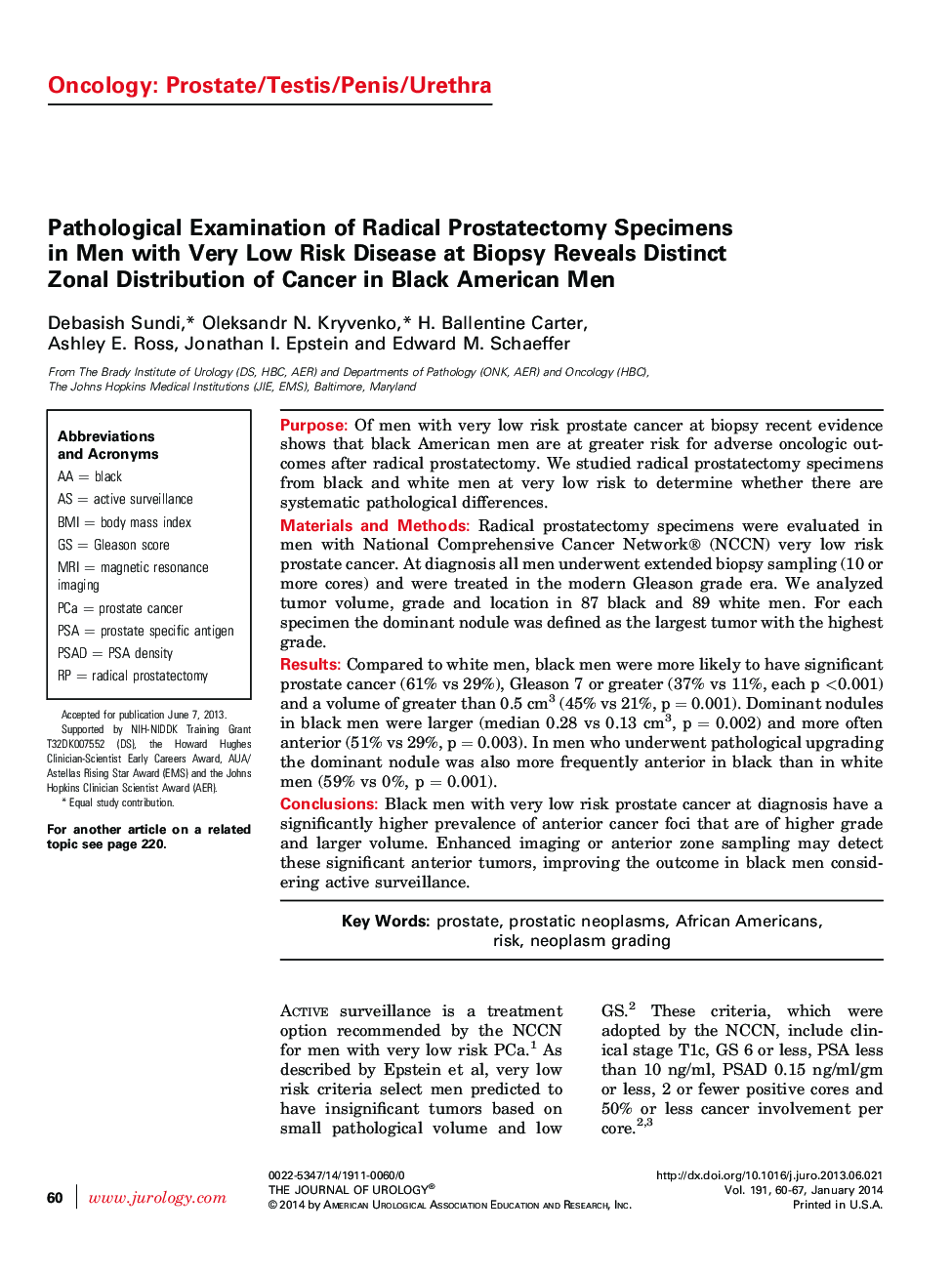| Article ID | Journal | Published Year | Pages | File Type |
|---|---|---|---|---|
| 3863536 | The Journal of Urology | 2014 | 8 Pages |
PurposeOf men with very low risk prostate cancer at biopsy recent evidence shows that black American men are at greater risk for adverse oncologic outcomes after radical prostatectomy. We studied radical prostatectomy specimens from black and white men at very low risk to determine whether there are systematic pathological differences.Materials and MethodsRadical prostatectomy specimens were evaluated in men with National Comprehensive Cancer Network® (NCCN) very low risk prostate cancer. At diagnosis all men underwent extended biopsy sampling (10 or more cores) and were treated in the modern Gleason grade era. We analyzed tumor volume, grade and location in 87 black and 89 white men. For each specimen the dominant nodule was defined as the largest tumor with the highest grade.ResultsCompared to white men, black men were more likely to have significant prostate cancer (61% vs 29%), Gleason 7 or greater (37% vs 11%, each p <0.001) and a volume of greater than 0.5 cm3 (45% vs 21%, p = 0.001). Dominant nodules in black men were larger (median 0.28 vs 0.13 cm3, p = 0.002) and more often anterior (51% vs 29%, p = 0.003). In men who underwent pathological upgrading the dominant nodule was also more frequently anterior in black than in white men (59% vs 0%, p = 0.001).ConclusionsBlack men with very low risk prostate cancer at diagnosis have a significantly higher prevalence of anterior cancer foci that are of higher grade and larger volume. Enhanced imaging or anterior zone sampling may detect these significant anterior tumors, improving the outcome in black men considering active surveillance.
